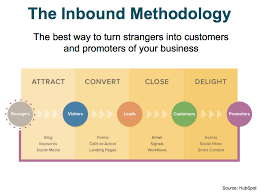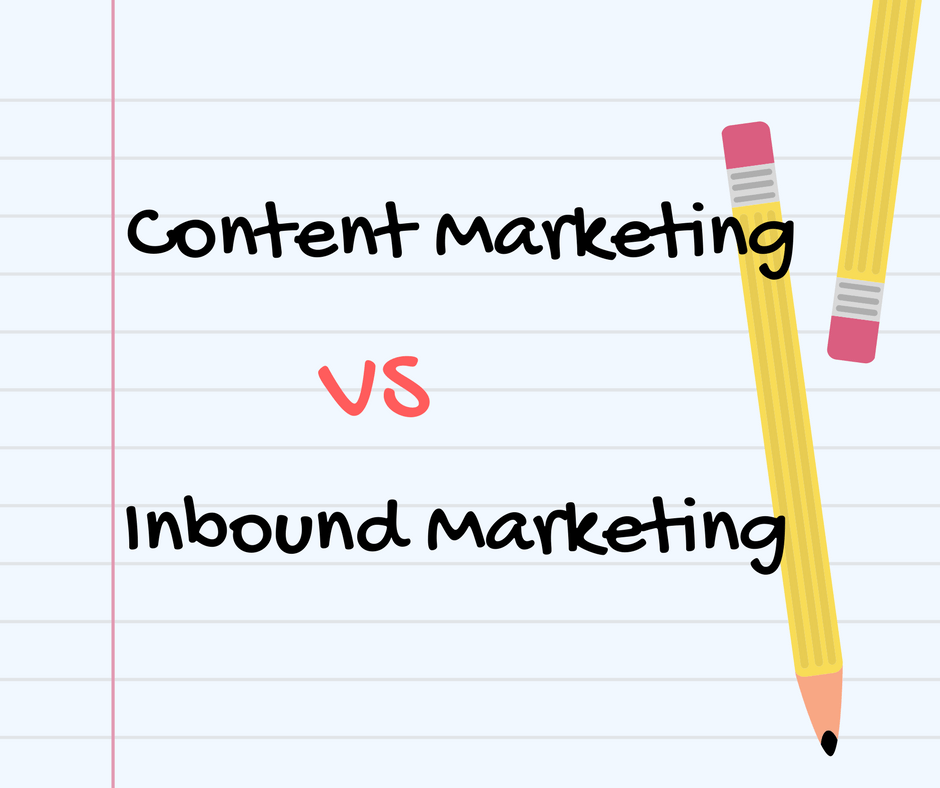SHARE
The 14 Most Common Misconceptions About Inbound Marketing
.png)
Inbound marketing has become the new way to approach people in the virtual world. In fact, businesses are switching from a more aggressive marketing approach to a more compassionate form of marketing, which waits for the customer to come to you when they are ready and receptive towards your product.
Natural leads turn into loyal customers.
However, considering that this new way of marketing is still something the business world is wrapping their heads around, many people have misconceptions about inbound marketing and how it works.
Here are 14 Misconceptions About Inbound Marketing
- All inbound leads turn into sales.
63% of people who want to know more information about what you're selling wait 3 months before purchasing anything.
This means that you have to nurture your leads and create loyalty; expressing a desire in developing a relationship. Nurturing people's interests actually generates 50% more leads at 33% lower costs. So taking leads and turning them warm by offering more information and loyalty incentives can be key which ultimately helps your sales team sell faster.
- Results will happen overnight. A lot of businesses quit their inbound marketing campaign 3-6 months after they begin. However inbound marketing is all about building up relationships with strangers and making them into customers. This isn't something that will happen overnight, the quicker you try to push your customers the more outbound you'll seem and you could lose important leads.
People that put more time into their strategy, the more cost-effective they are by 62%.
- Outbound marketing isn't necessary anymore. Outbound marketing has always been a quick and successful way to get right to the point and sell to your visitors. Although inbound marketing has taken over the marketing world, outbound marketing is still necessary when selling products. It’s important to find a balance and understand what each form of marketing can do for your business and how you should use them, in order to optimize your customer traffic.
- Sales reps aren't needed anymore. Now that everything is moving not only online but away from trying to directly sell to people, many think that sales representatives aren’t necessary anymore. However inbound marketing now can work even better with your sales team and create a balanced bridge between marketing and sales. Organizations are now able to work more smoothly through the selling process by having a constant interest in the visitors.
- Blogging doesn't bring customers. The truth is the total opposite;
92% of people who blog regularly receive customers through their blog content.
People now view blogs as an educational forum to further understand what you and your business are all about. Keeping the blog fresh and up to date also shows visitors how dedicated you are to always providing them with more information so they begin to trust you.
- Inbound marketing doesn't close customers. Having that inbound marketing tool between the marketing and sales process is beneficial. This helps when turning your initial cold leads into warm leads that influence sales. Having that platform that continues to interact and form a relationship with your customers helps to develop their loyalty to you as well as eventually have them buying your products.
- Search Engine Optimization (SEO) is dead. As technology progresses our business world becomes more and more advanced. Now a days Google has made SEO possible with more efficient methods. It is now able to filter more thoroughly through fake pages, poor links, and is able to pick out keywords better than ever. Now people are able to find reliable content faster and more efficiently.
- The industry you're in doesn't make for interesting blogs. There's always someone interested in understanding more about whatever it is your industry specializes in. Even keeping your blog constantly up to date helps strengthen your image and let's Google and other search engines find you. Finding what it is people want to know about you also helps to ensure you're not just blogging the same boring stuff over and over again. Blogs have become a huge part of the inbound marketing idea, so offering frequent interesting content helps further strengthen your platform.
- You can't measure the return on invest (ROI) of inbound marketing. With the
 new virtual world it’s easier than ever to track the traffic of your sites. Whether that be downloads of blogs, clicks, likes, or comments, determining the contact between the marketing and the visitors is accessible through software like Hubspot. This has helped determine if what you're doing inbound marketing wise is worth the investment.
new virtual world it’s easier than ever to track the traffic of your sites. Whether that be downloads of blogs, clicks, likes, or comments, determining the contact between the marketing and the visitors is accessible through software like Hubspot. This has helped determine if what you're doing inbound marketing wise is worth the investment. - Managing it isn't a big to do, anyone can do it. Inbound marketing is just like any other marketing, it may be known as natural but you still need a person who is dedicated to building up your platform for you.
Inbound marketing is more than just posting sometimes on Facebook, it's about learning about your customers and how they see things and finding ways to draw them onto your networks.
You need a constant who is able to go through trial and error to figure out what is the right fit for your business. This means researching your target audience, keeping things professionally updated, reacting to leads and always being open to trying new methods.
- Social media doesn't help sell.
71% of people actually are more likely to buy something because they follow the Facebook page of the product.
Although Facebook might not work for all industries, at least one social media network can be your customers go to when finding more information. Social media isn’t just about posting what you’re doing, these networks are also an easy social way to connect your visitors to your blog or website through links and shares. Many networks also allow people to create ads, enabling more areas of interests people could recognize.
- Offering good free content devalues your product/services. Providing satisfying content that your customers like to read actually helps bring more people and demonstrates the generosity of your business. Having that naturally produced free content for your customers also allows them to appreciate your intentions and in exchange helps provokes your call-to-action.
- Inbound marketing is just a fad. As the world of technology constantly changes new ways of marketing are forming. Ways that are sure to stick around for a while. Although outbound marketing is becoming less popular and has been pushed out by consumers, it continues to be a valuable strategy for many businesses.
It is even found that through online inbound marketing 73% of consumers develop relationships with a business or organization.
That is to say that now that technology is and will continue to be a big part in our lives, both business and personal, inbound marketing is said to be staying as well.
- There’s a lot of costs that come with an inbound marketing strategy. Most of the costs are start up costs, it pays to get software, designers, and writers but they are long term and continue to show results. In comparison, outbound marketing may give direct, quicker results but the continuous costs of outbound campaigns show to be more costly than inbound marketing.
Give Inbound Marketing A Chance! Here’s A Free Checklist
Download our checklist today to start maximizing the return on investment for your future marketing campaigns!Topics
- Content Creation (297)
- Growth-Driven Design Websites (167)
- Inbound Marketing (144)
- Sales Growth (133)
- Tangible Words (111)
- Search Engine Optimization (85)
- Social Media Marketing (83)
- Blogging for Business (75)
- Hubspot (75)
- Economic Development (64)
- Events & Training (60)
- Company Growth Podcast (49)
- Manufacturing (47)
- Tourism (46)
- Email Marketing (42)
- Case Stories (40)
- Testimonials & Client Feedback (36)
- Education and SaaS (23)
- Google (21)
- Careers (19)
- Inbound Marketing Agency (19)
- Cool Companies (18)
- FAQ (16)
- Alysha Dominico (13)
- Associations (7)
- Food and Beverage (7)
TW Blog Sign-Up
Learn more about how to grow your business and improve your sales team process.







